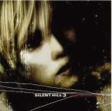Video game soundtracks are traditionally released on CD, though uncommon in this form in the West, but savvy composers can see greater returns and higher distribution from digital downloads.
THE MUSIC REVOLUTION HAS ARRIVED, and in its wake lie the bankrupt husks of once-mighty megaliths like Tower Records and Sam Goody. While Napster struck the first blow, the undisputed successor to the throne of legal music downloading is Apple’s iTunes Music Store. By offering decent quality downloads at reasonable prices, iTunes is largely driving the changes reshaping media distribution channels in the 21st century.
While seemingly every film gets a soundtrack release these days, game soundtracks are still extreme rarities outside Japan. This is largely attributed to the limited return game soundtracks bring in when compared to the costs of producing, distributing, and marketing the discs themselves. However, an online distribution model changes this dramatically, and already music by Chance Thomas (HALO), Jack Wall (MYST), and Marty O’Donnell (PETER JACKSON’S KING KONG) sits under the iTunes “Soundtrack” category.
Convincing your publisher that a game soundtrack is a good idea is a topic all its own. This month, though, we’re going to look at what it takes to get your music listed on iTunes. There are essentially two methods: directly through Apple or through a digital distributor.
THE MACINTOSH WAY
iTunes is a great opportunity for independent artists and smaller labels to easily distribute their music worldwide. However, finding the online application can be difficult as all the necessary links are in out-of-the-way places on Apple.com. Start at www.apple.com/itunes and click on the light gray hypertext link at the bottom of the screen that reads “Working With iTunes: Labels & Artists.” On the following “Labels & Artists” page, the application to apply is linked to in the first blue box on the right side of the screen, conveniently labeled “iTunes Music Store Online Application.”
After complying with a brief “don’t call us, we’ll call you” and “you better own the rights to this stuff” warning from Apple, you’re ready to apply. The application comes in two relatively short parts. The first section is about contact info and where globally you have the rights to distribute the music. The second part of the application is about the content—is it music? How many albums? How many tracks? Pretty simple stuff.
NIBBLING AT THE CORE
Here’s the snag with the Apple method. As Apple is fond of telling you, real people read and evaluate every application that comes through their site. As such, the word on the street is that Apple can take a very long time to get back to artists, if ever. Since the company doesn’t approve every artist who applies and you already clicked on the “don’t call us” button, the whole process can feel a bit like throwing a feather down a deep well and waiting to hear some sort of splash.
If you do hear back from Apple, you’ll need to download their free iTunes Producer software to edit track metadata, attach album artwork, and convert tracks into the necessary AAC file format. As of press time, there is no fee to apply, but Apple will take 35 percent of all sales. The other 65 percent goes to the record label, which in this case might be the game’s publisher, the artist, or an actual record label. How much you as the artist will see of that remaining 65 percent is completely dependent upon the specifics of your individual deal.
You will also need to set up your music with a UPC code for each album and ISRC codes for each track. The UPC (barcode) is used to track individual albums sold and the ISRC functions as a digital fingerprint for every song in distribution. To create your own barcodes, you need to become a member of GS1 US and obtain a unique company prefix. This can cost as much as $750. If you’re going through your publisher or an established record label, you may be able to get a UPC code through them. ISRCs can be obtained for free from the Recording Industry Association of America (www.riaa.com).
DIGITAL DIVERSITY
The other option is to contract with a digital distributor. A digital distributor works just like their real-world counterparts. You give them music and they work on getting it distributed to vendors. In this case, that means online music retail services such as iTunes, Napster, Rhapsody, etc. Digital distributors do the legwork for their artists and then take a small percentage of the return from sales as commission. Distributor legwork includes digitizing the music and converting it into all required file formats for the various retail outlets. Turnaround times range from about two weeks to four months, depending on the retailer.
The leading digital distributor right now is CD Baby, though others such as IRIS, indie911 and the IODA also exist. Artists are charged an initial “set-up” fee of $35 and $20 per UPC. For their part, though, CD Baby then handles all necessary file format conversions, acquisition of ISRC numbers, and then the actual distribution. Payment is then made a week after they receive the money from the retailers.
While primarily established to aid independent and unsigned bands, digital distributors can remove many of the hassles associated with the Apple method. Additionally, your music will find its way to more than just iTunes. The downside however is a smaller monetary return and the insertion of a middle-man between you and your music on iTunes.

